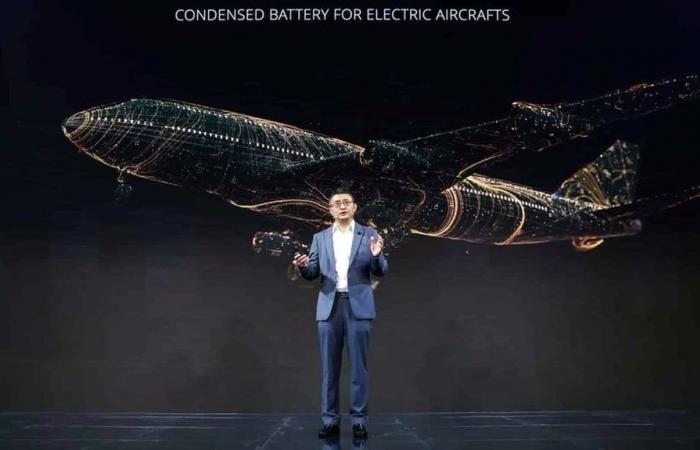CATL, currently the world’s largest battery manufacturer, is testing a new capacitor battery technology for passenger aircraft. The first medium-haul model is expected to take off in just four years.
The Chinese industry leader CATL recently reported on successes in electric aviation during a conference at the “15th World Economic Forum Annual Meeting of the New Champions”. As “China Daily” writes (via “CNEVPost”), it was the first time that CATL founder Robin Zeng spoke about the expected range of the planned electric aircraft.
According to the report, the company has completed successful tests with a four-ton aircraft and plans to build a larger eight-ton passenger aircraft by 2028. CATL expects the future model to have a range of 2,000 to 3,000 kilometers.
No electric jumbo jets, but a first step
The company wants to use a new capacitor battery technology with an energy density of 500 watt hours per kilogram for its aircraft. This corresponds roughly to the energy density of solid-state batteries. For comparison: modern Tesla models with BYD’s Blade battery achieve around 150 Wh/kg.
Mega-plane: This is what the world’s largest cargo plane will look like
01:02 min
The aircraft battery was presented in spring 2023. Even then, CATL was planning to use it in passenger aircraft. Chief scientist Wu Kai stated at the presentation that special safety measures had to be taken for use in aviation, which would lengthen the development process. To research the technology, the company entered into a partnership with the state-owned Chinese aircraft manufacturer Commercial Aircraft Corporation of China Ltd. (COMAC).
If you look at the target weight of the announced aircraft, it quickly becomes clear that jumbo jets with electric drives are a thing of the future. The empty weight of common medium-haul aircraft from Boeing and Airbus is just over 40 tons. An eight-ton aircraft is therefore more like a larger private jet, but certainly not a mass-market holiday aircraft.
Virtually no aircraft competition
However, if CATL succeeds in building a purely electric aircraft with this range in a relatively short time, it would be a big step for emission-free aviation. There are currently no comparable projects from other manufacturers apart from studies; an Airbus concept based on fuel cells is currently being presented with a planned range of 1,000 nautical miles, which corresponds to around 1,850 kilometers. But it would not be purely electric anyway – just much more environmentally friendly.
Droneliner
No crew, but a lot of cargo: This drone could become the heaviest aircraft in the world
The additional weight of the electric planes with the large batteries certainly presents engineers with some problems – for example when it comes to landing and braking the planes. Safety is also likely to be a very important issue, because if such a large battery were to catch fire, it would be a nightmare for the rescue services as things stand.
It is likely that its use in civil aviation is still a long way off, as safety requirements are extremely strict and CATL is far from completing development.






